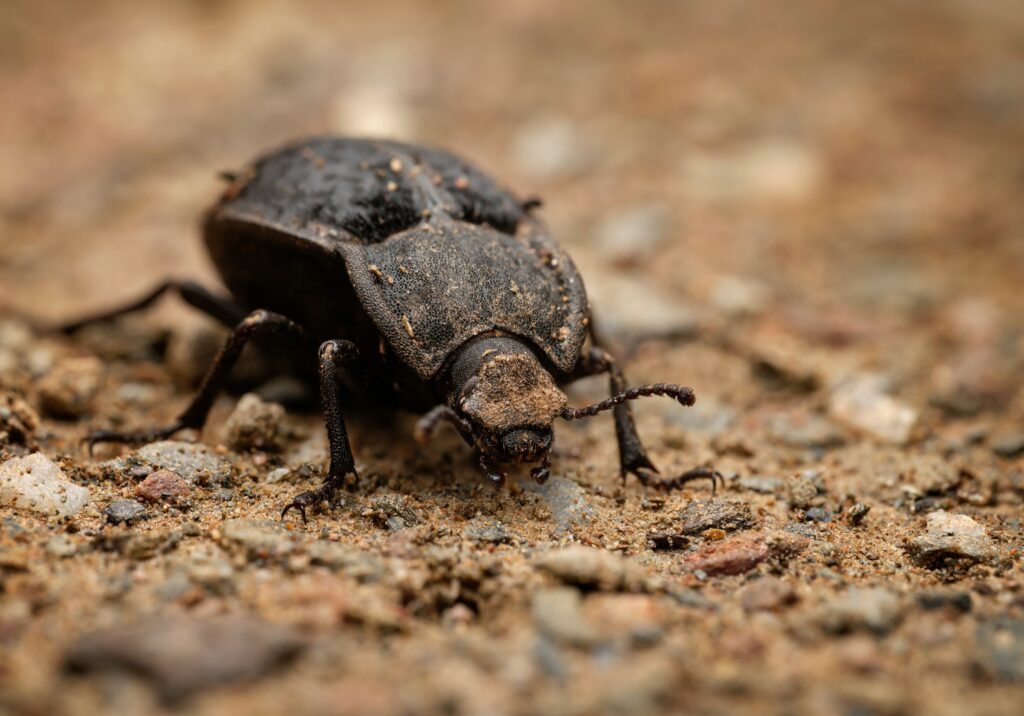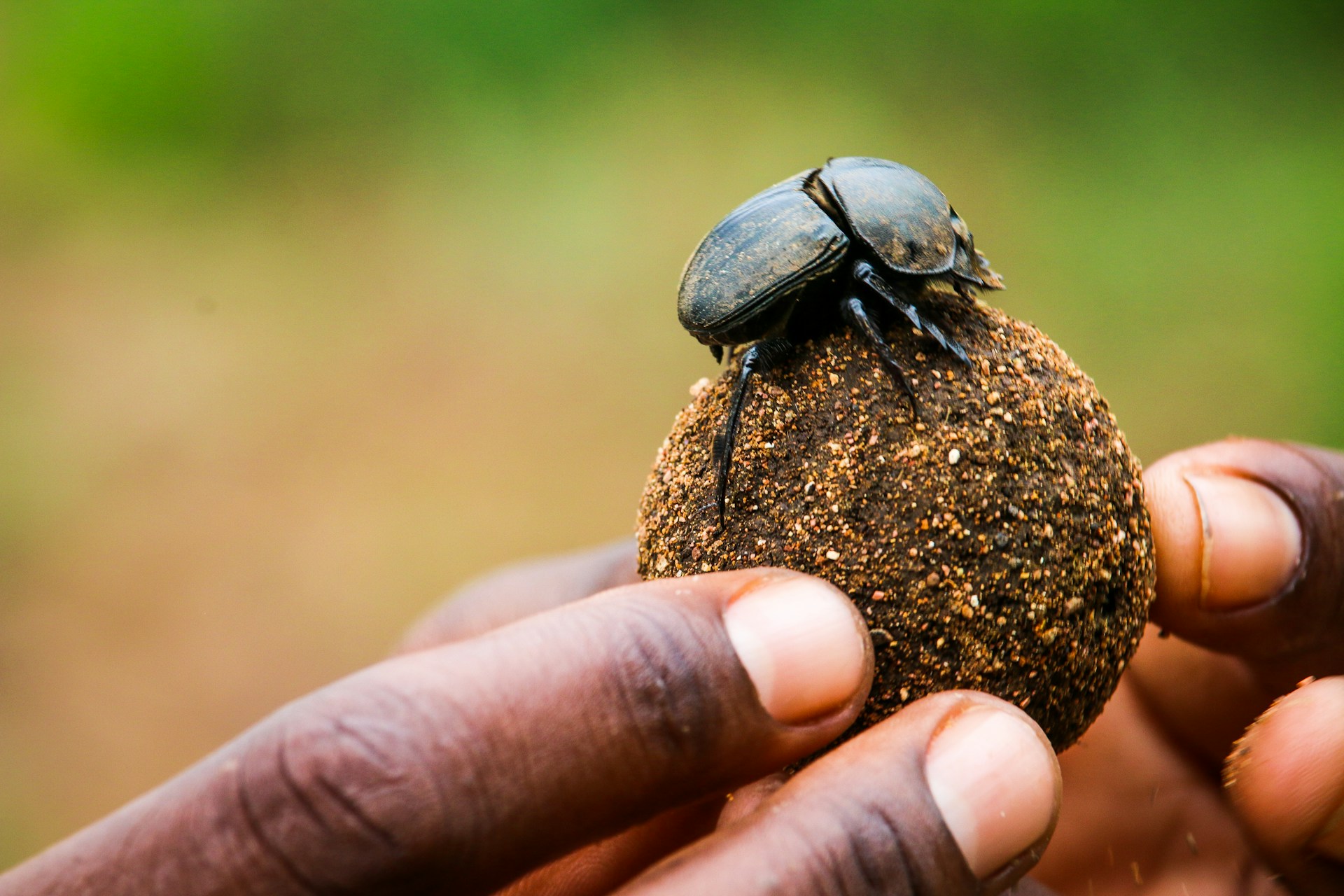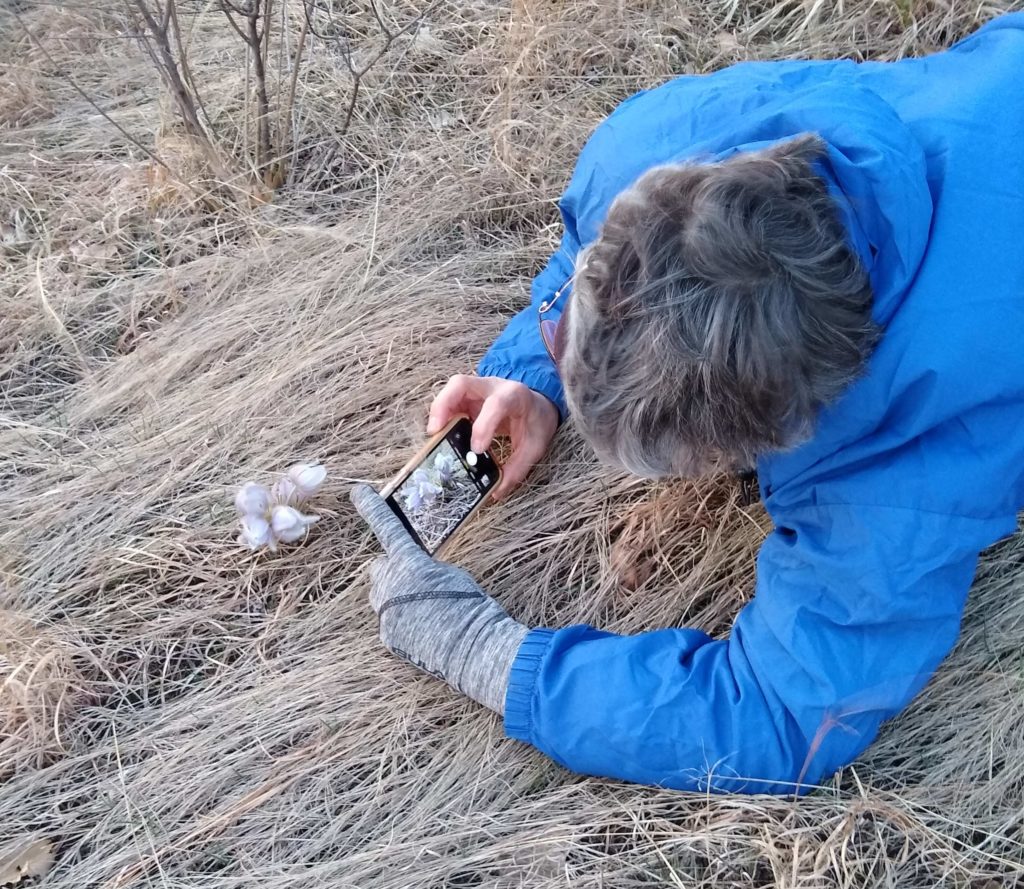Below the swaying grasses and fragrant flowers of a grassland lies the soil. Soil feeds and nourishes the plant life which, in turn, provides nutrition to herbivores galore. These animals spend copious amounts of time grazing from this delicious smorgasbord. Bison (like the herd found at Belwin) can eat up to 30 pounds of this cellulose material every day. And in the end, what goes in must come out.
Call it what you will: dung, poop, pats, pies, scat, manure or waste, it is an important component in soil health and the web of life. Farmers of the past and present spend lots of time collecting and spreading manure to ensure that the nutrients are returning to the earth to support excellent crop growth. Nature too, has its own sanitation engineers working hard to recycle nutrients to the soil for plant growth, to continue to feed the herbivores which feed the carnivores and omnivores – in and out, in and out….the cycle goes round and round.
One of nature’s best waste warriors is the Dung beetle. These critters are essential and entertaining! Coprophagus by nature (eating feces), they fall into the insect category of animals. This means they have an exoskeleton, six legs, three body parts, two antennae and compound eyes. They also have a four-part or complete life cycle of egg, larvae, pupa and adult.
Disgusting? Gross? Well sure, but let’s take a deeper dive into the world of the dung beetle. I am willing to bet you will come to the end of the article amazed by this small member of our planet.
Dung beetles are adapted mainly to grassland and savanna conditions, although they can be found everywhere in the world except Antarctica. They have distinct characteristics for coprophagy, such as elongated and bowed legs for handling spherical dung masses, teeth or spurs on their legs and heads that are used for cutting and moving masses and burrowing into the soil. They have the ability to fly several miles and can scent a whiff of dung from the air with their specialized antenna.
Weighing in at 3.5 ounces and measuring .5 inches to 1.5 inches long, these critters are not only the strongest insect in the world, they are THE strongest animal in the world. Rollers can pull a whopping 1,141 times its own body weight. This is the same as an average human lifting two fully-loaded 18 wheeler trucks.

Numbering roughly 7000 species worldwide, there are three basic kinds of dung beetles, each one named for the way they use the poop.
Rollers – Rollers do exactly as their name suggests. They create and roll dung balls. Once the ball is formed they use their back legs to push the ball to a soft spot and then bury it in the earth. This can then be used as a brood ball where the female lays her egg or just as yummy food for the adults.
Tunnelers – Tunnelers will land on a manure pat and dig right through to the earth, making a tunnel lined with dung. Having the dung underground keeps it fresher longer and protects the growing grubs from predators and parasites. Females typically tend the tunnel while the male continues to bring home more deposits. One or both parents stay with the young until they mature, which can be up to four months.
Dwellers – Dwellers stay on top of the dung heap. The female lays her eggs into the pile and the entire development takes place inside the mass.

These strategies not only support continued populations of dung beetles but also provide a number of ecological services! Moving dung around spreads undigested seeds of native plants to different parts of a grassland or forest. Digging into the soil supports aeration for plant roots as well as water infiltration. Burying manure helps control pest populations like flies. Dung beetles are also prey for a number of insect eating animals that include birds, reptiles, amphibians and mammals.
The saying goes that fact is stranger than fiction, and dung beetles certainly live up to that statement.
These bits of information are just the beginning of learning about this amazing and entertaining animal. Scavengers of all kinds are an often overlooked and under-appreciated part of the cycle of life. Every critter that we share the planet with has a job to do, whether we understand it or not. Without the scavengers, there would be a heck of a lot of smelly mess out there! The next time you are out hiking and spot an eagle, turkey vulture, opossum, crow or dung beetle, send out a word of thanks. They are doing an important job and we appreciate them for it!
Check out the links below to learn more about the dung beetle!
https://fmr.org/news/2016/07/20/dung-beetles-waste-warriors
https://digitalcommons.unl.edu/entomologydiss/12/
https://core.ac.uk/reader/188058470
https://zoo.sandiegozoo.org/animals/dung-beetle

Attend an upcoming event with Lynette as your guide! Visit our events page for more information.